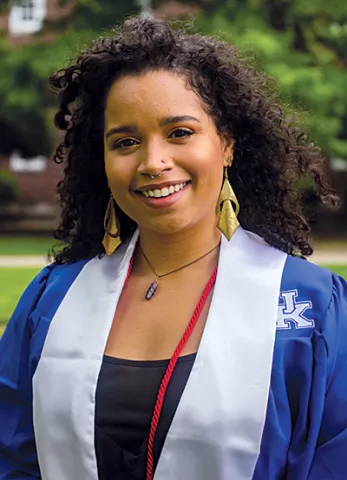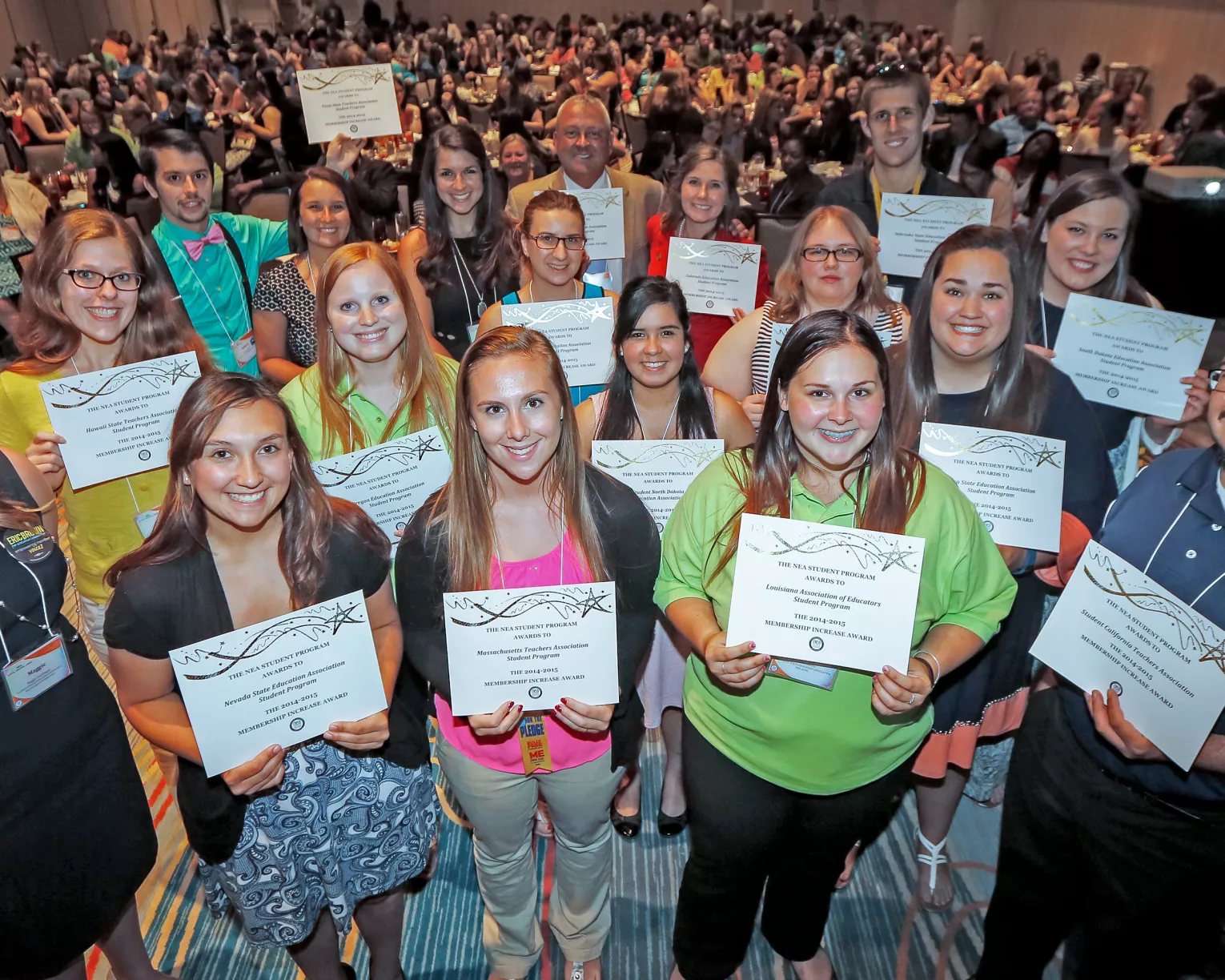
Joining NEA’s Aspiring Educators has changed my life. I remember the first time I felt the power of our union. It was a cold April day in 2018, and my daughters and I were bundled up in jackets and mittens. We were getting ready to march alongside fellow Kentucky Education Association members in the statewide sick-outs during the #RedForEd movement. We marched alongside aspiring educators, teachers, education support professionals, retirees, and community members from the farthest corners of the commonwealth to the Capitol building.
My youngest, Italy, who was only 5 at the time, held a sign that said, “Future Voter In Training.” A reporter from NBC News caught up to us and asked my oldest daughter, Janice, what she wanted to be when she grew up. Her answer? “A scientist.” I was literally the proudest mama of all time. This moment not only showed my kids the power of using their voices, but showed the country what can happen when we, the people, come together. A wave of #RedForEd protests across the country followed our lead.
Fast forward to May 2020, when I was elected as the Aspiring Educators chair at the first-ever Aspiring Educators Virtual Conference. Coming out of student teaching, I found myself mourning the loss of my time in the classroom as I took on this new role. I get emails to this day from students in Mrs. Graham’s magical sixth-grade social studies class with the subject line “Hey Gurl” or “I Miss You.” Those kids taught me more than I taught them and showed me what it is to have the love that teachers have for their students and schools.
Being a member of NEA continues to teach me the love that educators have for their communities.
In the summer of 2020, the union came together again when members across the country joined protests demanding justice for Breonna Taylor. At anprotest in Lexington, I saw one of my former students as well as a Kentucky high school teacher get arrested. Aspiring Educators and NEA members put their own health on the line during a global pandemic to “Say Her Name.”
I had hard conversations with myndaughters on what it is to be a little Blackngirl in America. I was fueled by my lived experiences, by the experiences of my former students, by the voices of the people facing this racial reckoning, and by the words of my fellow aspiring educators.
I believe that the vision for NEA’s Aspiring Educators program is not only an incredible source of activism around education and social and racial justice, but it’s also a place for self-improvement for the future leaders of our profession and of our association. Joining Aspiring Educators will change your life. It’s a program that provides the tools, support, knowledge, and opportunities to both find and use your voice. I can’t wait to work with all of you and join the millions ready to welcome you into our union family.


